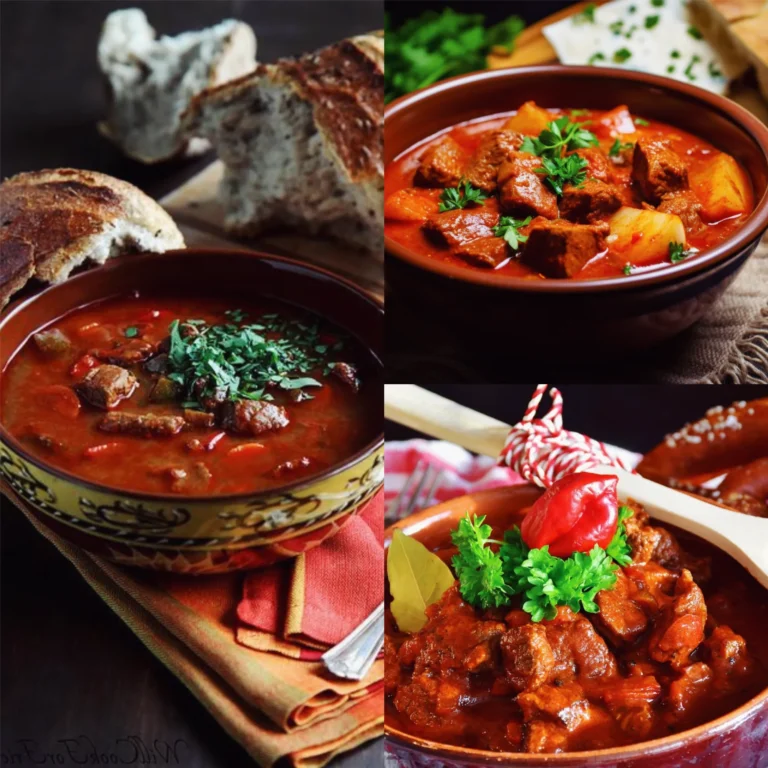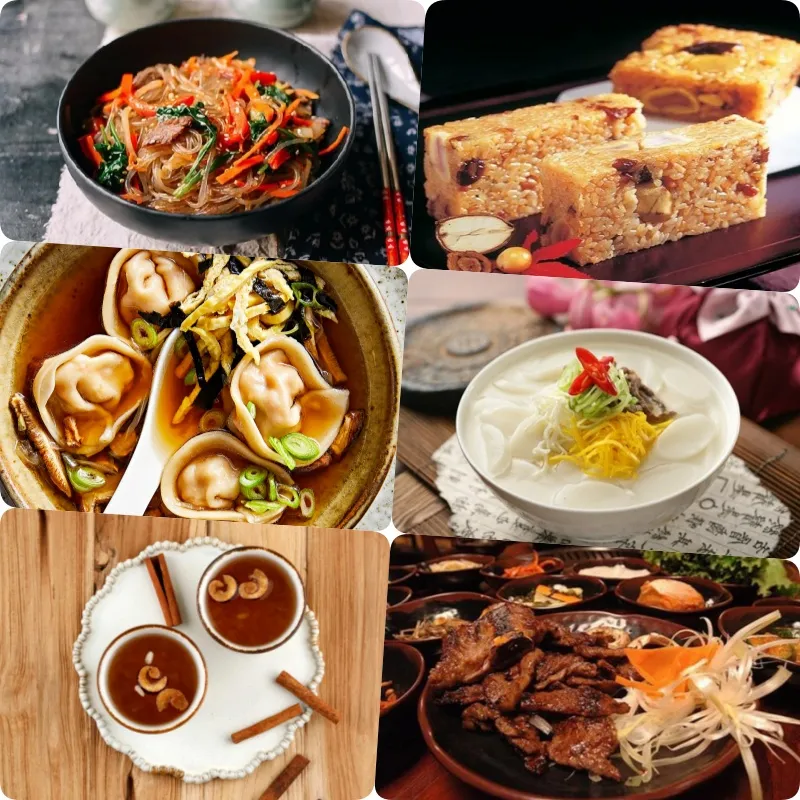
Lunar New Year is one of the most important holidays for Koreans, a time when families gather together to celebrate the New Year and perform traditional rituals. The meal on the first day of the New Year is not just an ordinary meal; it symbolizes family unity and hopes for a prosperous year ahead. There are eight essential dishes that are always present on the Korean New Year’s table, each carrying its own unique meaning and tradition.
First, Tteokguk (Rice Cake Soup) is an indispensable dish on the Korean New Year’s table. This soup can be prepared in various ways depending on the preferences of each family, but generally, it is made from beef broth, soft rice cakes, minced meat, julienned eggs, and green onions. Tteokguk is not only delicious but also symbolizes growth and the beginning of a new year with good fortune.
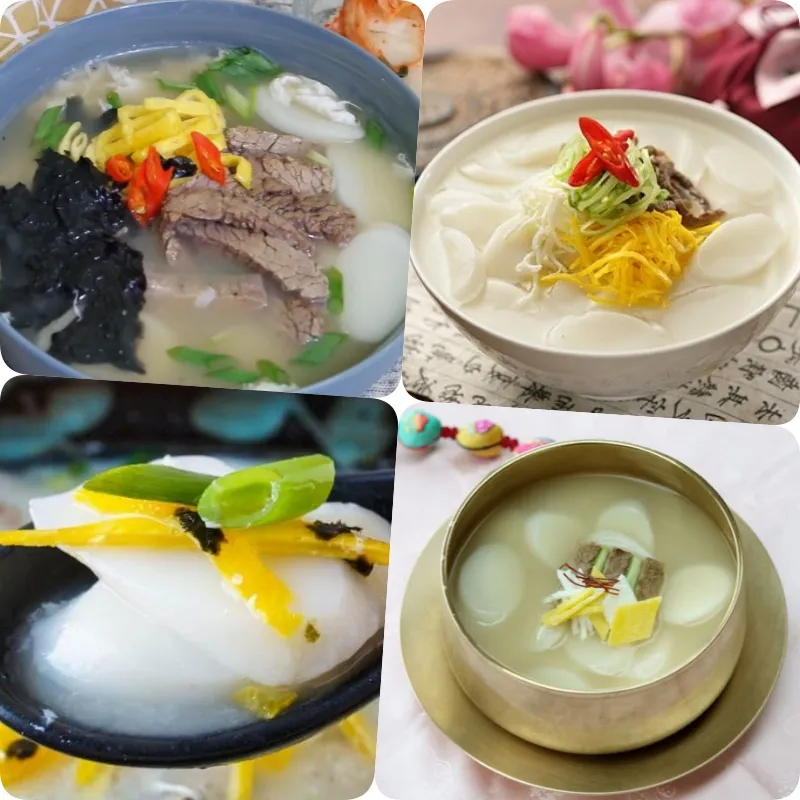
The second dish is Manduguk (Dumpling Soup), a popular dish in North Korea. Instead of Tteokguk, people in this region often eat Manduguk during the New Year. This soup is made with dumplings (mandu) cooked in beef broth with green onions. The shape of the mandu resembles ancient coins, and Koreans believe that eating Manduguk during the New Year will bring luck and wealth.
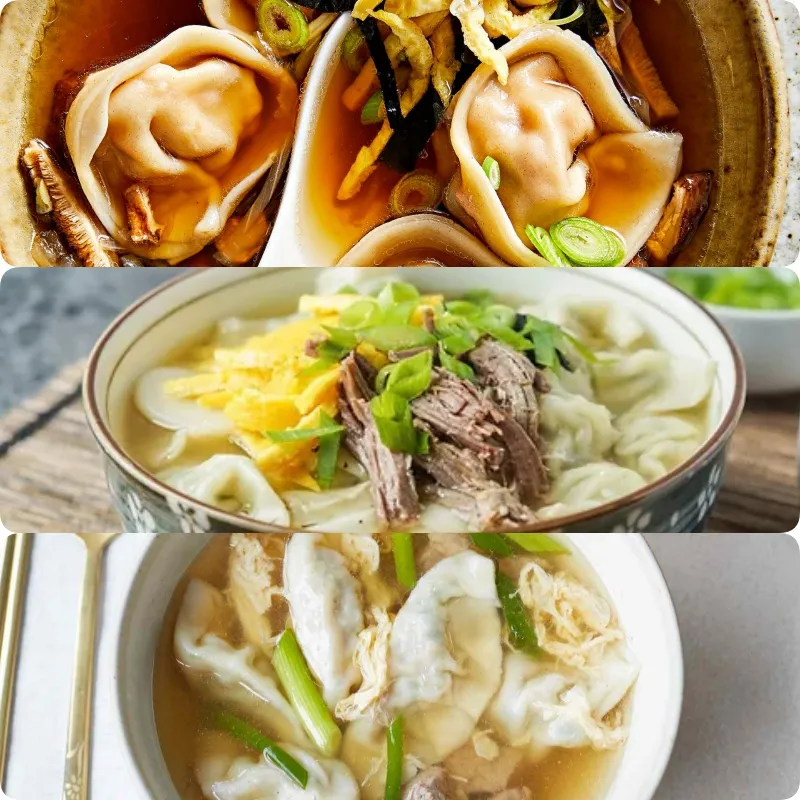
Jeon (Korean Pancakes) is the third dish on the list, made from rice flour, eggs, vegetables, meat, and crab. Jeon is fried until crispy and is often eaten as a side dish (banchan) during the New Year’s meal. This dish is not only popular in households but also frequently appears on the menu of Korean pubs. Especially in recent years, Jeon with crab and egg filling, shaped into cute heart forms, has become increasingly popular on the Korean New Year’s table.
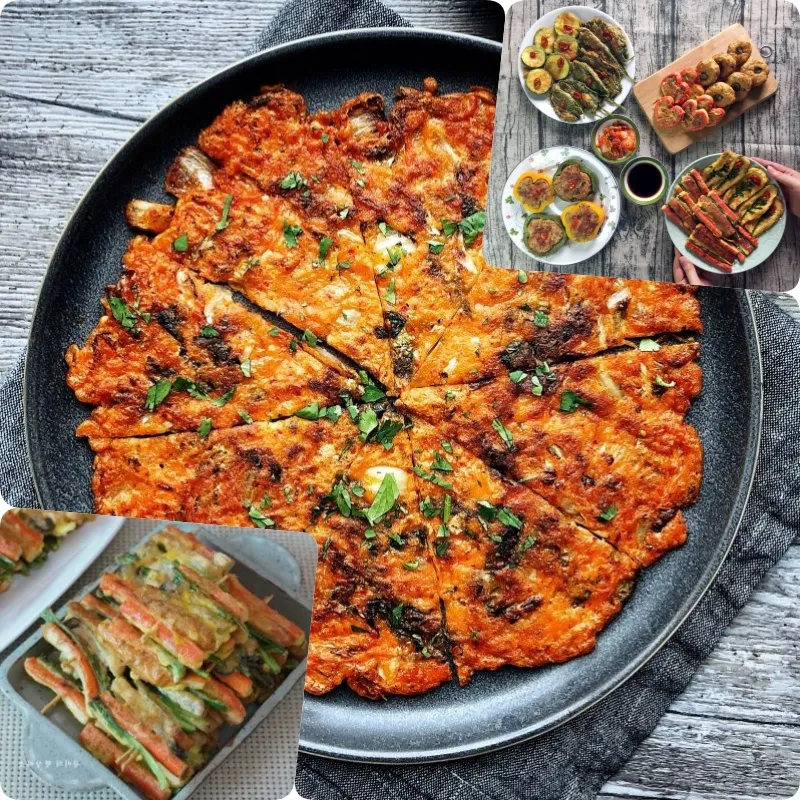
Next is Pyogo beoseot-jeon (Stuffed Mushrooms), a dish of mushrooms stuffed with meat and grilled. Although simple, it is quite special, with a filling made from ground beef, tofu, eggs, and seasoning. Koreans believe this dish brings good health in the New Year.

Bulgogi (Grilled Beef) is a traditional dish that dates back to ancient times and was once reserved for royalty. Thin slices of beef are marinated in a special sweet and savory bulgogi sauce, grilled, and typically enjoyed together by families during the New Year, fostering closeness and happiness.
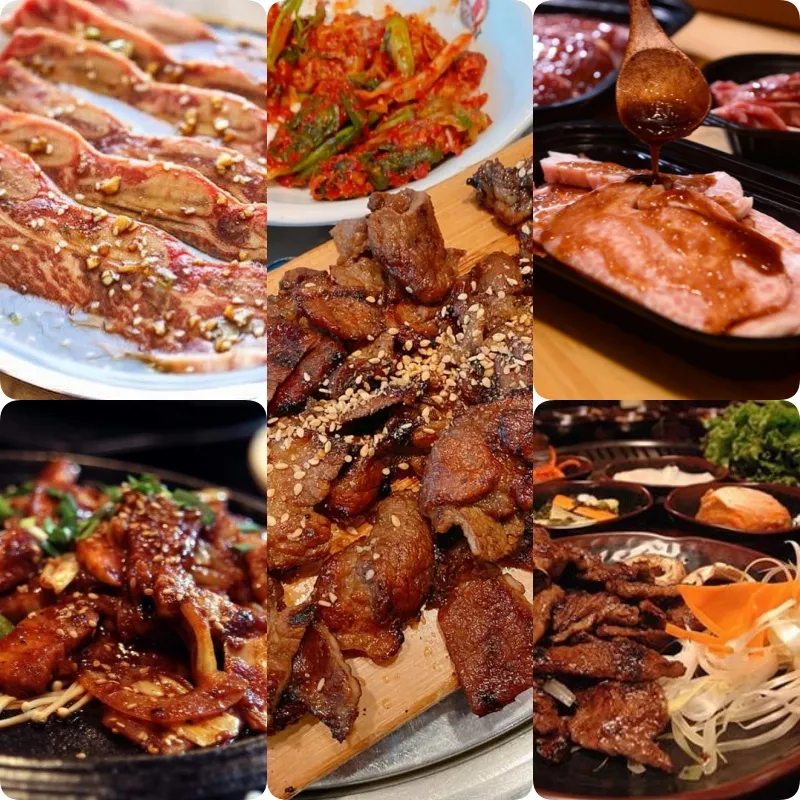
The sixth dish is Japchae (Stir-fried Glass Noodles), a must-have in any New Year’s meal. Japchae is made from stir-fried glass noodles combined with vegetables like green beans, carrots, onions, mushrooms, and beef. The unique flavor of sesame oil and the harmonious blend of ingredients make this dish both delicious and visually appealing.
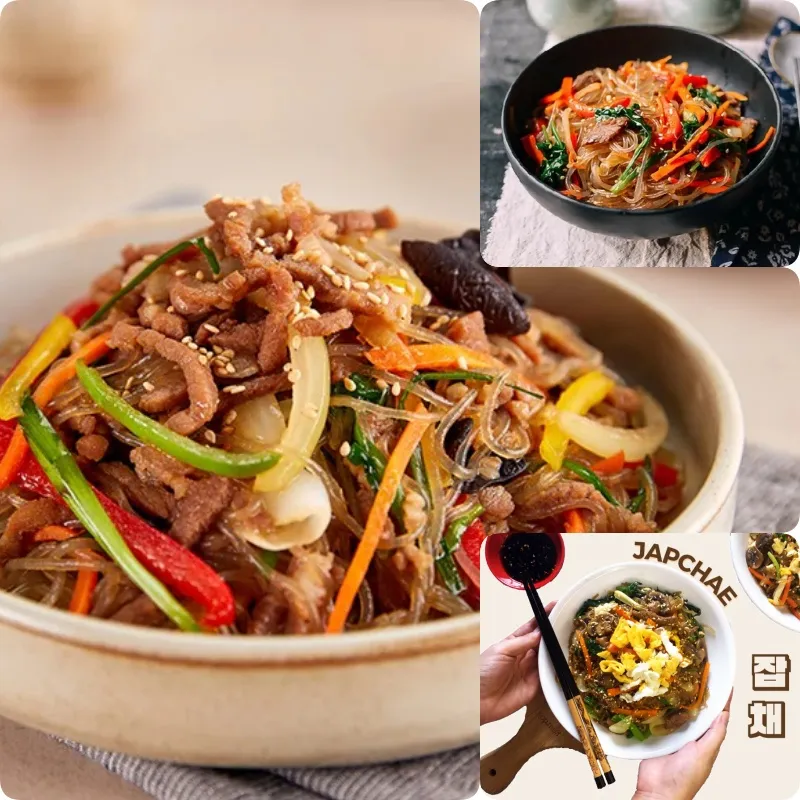
Yaksik (Sweet Rice with Nuts and Fruits) is the seventh dish on the Korean New Year’s table. Yaksik is a traditional sweet rice dish made from glutinous rice, honey, brown sugar, chestnuts, jujube, pine nuts, and dried apricots. The red color of Yaksik is considered a symbol of luck, and this dish often appears at important events like weddings, birthdays, and the New Year.

Lastly, Sujeonggwa (Cinnamon Punch) is a beverage that cannot be missed on the Korean New Year’s table. Sujeonggwa is made from ginger, cinnamon, and sugar, offering a sweet, slightly bitter, and spicy taste with the distinct aroma of cinnamon. This warm drink not only helps keep the body warm during the chilly early spring weather but is also beneficial for digestion during the traditional New Year feast.
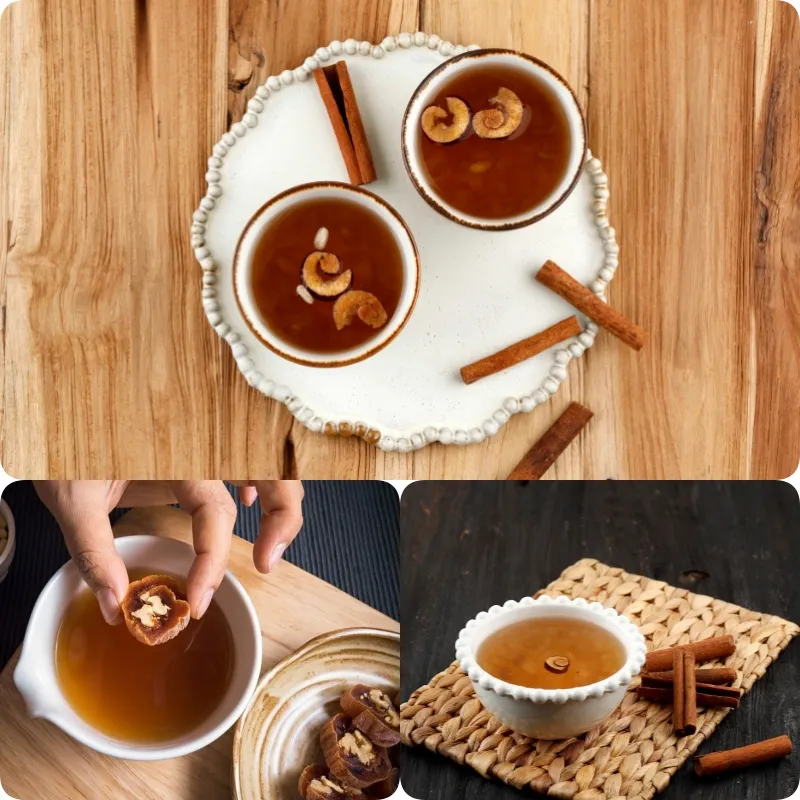
These traditional dishes not only make the New Year’s meal complete but also embody the deep cultural and spiritual values of the Korean people, helping to strengthen family bonds and bring luck for the year ahead.
